Are you considering a Sea-Doo Switch pontoon boat?
I’ve driven one and other jet drive boats, and I’d like to share my experience.
Thank you to Lake Norman Power Sports for letting me review one.
My Thoughts
I feel the Sea-Doo Switch has the potential to revolutionize the boating industry, thanks to Sea-Doo’s exclusive Polytec hull patent.
The market begs for a more affordable pontoon boat, and the Switch aims to be that; traditional pontoon boats have become expensive, cutting many out of the market.
With the ease of driving, predictability, repairability, and reliability of Polytec materials, Sea-Doo has hit all the right marks. Plus, it even comes with brakes, a unique feature in the boating world!
Video
Specs
Here are the specs along with other details to help you when buying.
Sizes And Options:
The length varies from 13 feet to 21 feet depending on the model you want to buy. An extension platform can also be added to some models to give you an extra 2 feet.
The image below shows you the length and model options.
Seating Capacity:
The seating capacity varies from 5 to 9 people depending on the model and size you need.
Is this normal capacity for a pontoon boat?
Yes, 5 to 9 people is about what I see for most pontoons of similar size on the market.
Engine Options:
- 130HP (Only on the base model)
- 170HP (The one I recommend getting)
- 230HP (The only one with a supercharger!)
All engines are Rotax powered, owned by BRP, who also owns Sea-Doo.
The boat and engine are from the same company, so it simplifies warranty work.
The engine is not a “jet engine”; it’s a 3-cylinder 4-stroke engine, more like a motorcycle engine. Rotax is known for aircraft engines but makes others like ATVs, Go-Karts, and motorcycles.
Closed loop Cooling
Rotax makes purpose built marine engines with 3-cylinders and use closed-loop cooling. It’s also the same engine that Sea-Doo has used in their jet skis, so it’s not a new or unknown engine, it’s tried and tested.
Top speed:
- 130 HP = 26MPH – “Fast enough for pull sports, but don’t expect a lot”
- 170 HP = 34 to 37MPH
- 230 HP = 44MPH “It’s a pontoon boat, this is what most of them do”
That’s not fast enough?!
I get this one a lot, but other pontoons boats on the market top speed vary from 18MPH to 50MPH, so the Switch falls inline with other pontoons on the market.
Does It Come With A Trailer?
All models come with a trailer included in the MSRP.
The Best Boat For Beginners
I just got to say it, the Switch has to be the best boat for beginners I’ve ever seen due to the handlebars, throttle controls, brakes and everything at your fingertips.
I find the Switch is easier to control; you use your fingers, not your whole body like with other boats.
It reduces fatigue, stress, and intimidation for new owners with its handlebar controls and precise jet drive, even in neutral.
The handlebars feel like a crossbreed between a steering wheel and a joystick; there is a reason why joysticks are making their way to boats, as it’s so much easier than a steering wheel and levers.
Driving The Switch
Driving it is not like driving any other pontoon, or any boat for that matter, it’s easier.
It feels like driving a large and heavy jet ski.
I joke that driving non-jet-drive boats looks like the man behind the curtain from The Wizard of Oz, but it’s true. Compared to the Switch, you move very little, and have such greater control.
Jet drive boats are always processing water, this means when the engine is on the impeller is moving, and you’re always in control.
I find driving the Switch is like flying a helicopter, offering precise control. Other boats feel clunky, akin to driving a semi-truck with lots of shifting and a large steering wheel.
Brakes & Steering?
This may blow your mind, but the Switch comes with brakes(iBR). Brakes, on a boat?
Yes, it has something that STOPS you, even going at speed! I know it sounds crazy, but Sea-Doo has had brakes on their watercraft since 2009.
The bucket in the picture above moves up and down to control the forward and reverse direction of the thrust. The brakes work by dropping the bucket when you’re at speed to create drag.
Learn more about iBR braking here.
The brakes, or iBR as Sea-Doo calls them, really do work and will stop sooner than other boats.
Brakes on a boat are not common, and only the Switch has iBR. (Well, some Coast-Guard boats have “brakes”)
While braking is nice to have, what makes iBR so useful is when you’re docking or boarding your trailer. The control iBR gives along with the predictable nature of the Switch makes it so easy to dock.

A nozzle behind the reverse bucket controls steering. Since it’s only moving a small nozzle, you don’t need to move the handlebars much. The nozzle is also lightweight, so there is no hydraulics to maintain like you have with other boats.
iDF
iDF (Intelligent Debris Free system) is a Sea-Doo system to unclog your jet pump from debris.
Ski Mode
With Ski Mode, you set the take-off power and top speed you want to pull a tuber or skier.
When in Ski Mode, you keep the same predictable pull which skiers and tubers love.
If you’re doing any pull sports, make sure you get a shock tube (Amazon Link Ad) to protect your impeller.
VTS And Trim Tabs
It’s good to not that the Switch has VTS (variable trim system) and trim tabs for adjusting the boat’s level at speed.
With a jet drive, bow rise isn’t a big issue, so you don’t need to trim it much, if at all.
Timing a boat can be tricky for new owners, but with Sea-Doo, timing is less of a concern.
Security Key
The DESS key is a crucial security feature for Sea-Doo.
It acts as a kill-switch and is programmed specifically for your boat, unlike standard cut keys found on other boats, which offer minimal security.
It also floats in case you drop it in the water!
No Exposed Prop
A jet pump is used to power the Switch, this means there is no exposed prop.
Props are sharp and dangerous, and if you’re not careful, you can hurt yourself.
Kind of a huge selling feature, the Switch has its impeller inside the center pontoon, eliminating the risk of propeller injuries or lower unit damage.
However, like any boat, turn off the engine and exercise caution when boarding.
If there is no exposed prop, does this mean you can go in shallow water? What about boarding with the engine on? No, you still need to have the engine off when someone is boarding, and you can’t go in less than 3 feet of water.
Loading The Switch On The Trailer
I’ve loaded a few pontoon boats on trailers, and they’re not fun.
The bunks are skinny, and you need to get it just right.
I find the bunks are large and more forgiving when loading the Switch on a trailer. The center pontoon is just a GTI bottom hull, so just load it up like a jet ski, and you’re good.
How Hard Is It To Put Up The Bimini Top?
A Bimini top is a must for any boat if you ask me.
The problem is that many Bimini tops suck and are a pain to put up or down.
The good news is the Sea-Doo Switch Bimini can be put up by one person, and to take it down only requires pressing two buttons on each side of the tower.
The Bimini top provides good coverage for the captain and passengers behind.
There’s an option for a front Bimini that offers complete coverage when attached to the rear Bimini.
I’m slightly over 6 feet tall and had no trouble standing and moving under it, and someone up to 6 feet 5 inches should have plenty of headroom.
Sound Dampening Is Very Good!
An interesting note, older Sea-Doo Jet Boats were loud, but the Switch is impressively quieter, thanks to the engine’s central placement.
Unlike rear outboard motors on other pontoons that generate heat and noise, the Switch’s center engine and iBR system offer a premium, smooth, and enjoyable experience without clunky gear shifts or shaking.
When it comes to siding, Sea-Doo went with a different approach.
Other pontoons use aluminum siding and have so, well, since the start of pontoons.
But will the vinyl yellow over time? They claim it won’t yellow.
Using vinyl cuts down on weight, but more importantly, it improves visibility for the driver. You can see through the walls of your Switch, which is very handy when docking.
Easier To Replace
Another benefit is that it’s easier to replace the siding, as it unzips and uses Velcro.
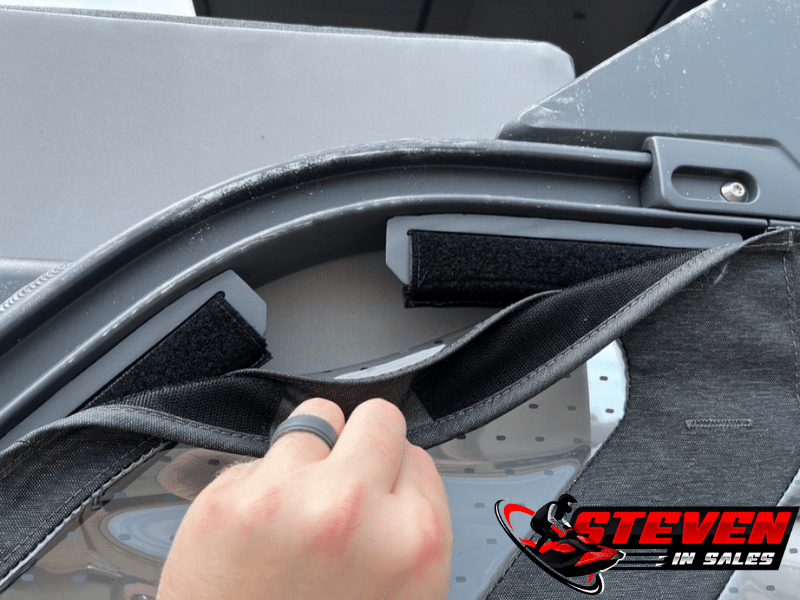
Everything Is Modular!
As talked in the last section, you can remove the vinyl siding if it gets damaged or dirty, or you want to get new ones to freshen up your boat.
That is not the only thing that can be replaced.
While everyone is talking about being able to move the seats anywhere in the boat, which is a nice feature, what makes me the most happy is the siding on the pontoons can be popped off and replaced.
Accidents happen, but with replaceable panels on the Switch, you can quickly fix damage without waiting for a repair shop or costly repairs.
Moving The Seats Around
The biggest selling feature of the Switch has to be the ability to easily remove your seats and build a custom layout of your choosing.
Anywhere you see the circle cut-out you can place a seat, no tools required.
While picking your own layout is cool, most will pick one and stick with it.
Easier To Clean
What makes this feature shine to me is how easy it makes it to clean the boat. Just pop off the seats, set them to the side, and power wash the deck.
The seats have storage underneath, but the ability to remove them for cleaning is a significant advantage.
It’s more important than custom layouts in my opinion, as spills and leaks can easily be addressed.
Fishing
The idea that you can make the Switch into a “fishing pontoon boat” for the weekend and a “family boat” for the holidays by swapping the seats around is a huge deal!
LinQ System
LinQ is the system to attach accessories to your craft.
Many people will love to know that the Switch has many LinQ points that will attach things like coolers, gas tanks and more accessories without the need of tools.
It’s a clever idea that really expands the capabilities of the boat. You could even get fishing rod holders and make this into a nice fishing boat if you wanted to.
How Do You Get To The Engine Compartment?
The engine placement and ease of access is something that the Switch has really done well, and I feel doesn’t get much attention.
Oil changes and servicing will be similar to their watercraft.
Who Makes The engines?
Unique to the boating industry, Sea-Doo uses its own purpose-built engine, not repurposed truck engines like many other boat manufacturers.
The Rotax engine is designed for watercraft, evident from the dipstick and easy oil filter access.
Other brands use SUV engines, which can have oil filters in inconvenient places for boats.
Closed Loop Cooling
It’s important to remember that Sea-Doo watercraft feature closed-loop cooling, using antifreeze and a ride plate, similar to car engines, to cool.
They don’t take in lake or ocean water for engine cooling, but do for exhaust and intercooler.
Despite closed-loop cooling, winterizing the Switch is still necessary!
Images
Want more info on the Sea-Doo Switch?
Here are images of the Switch that show off more features and items.
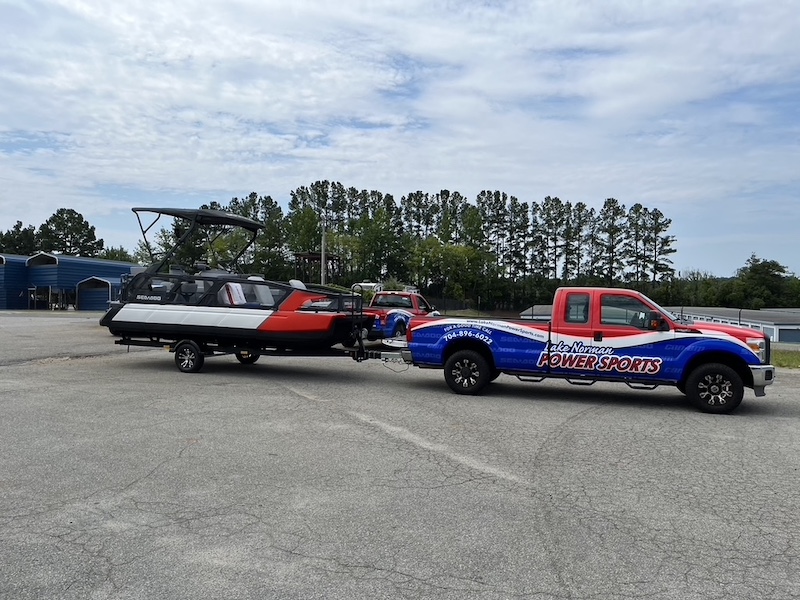




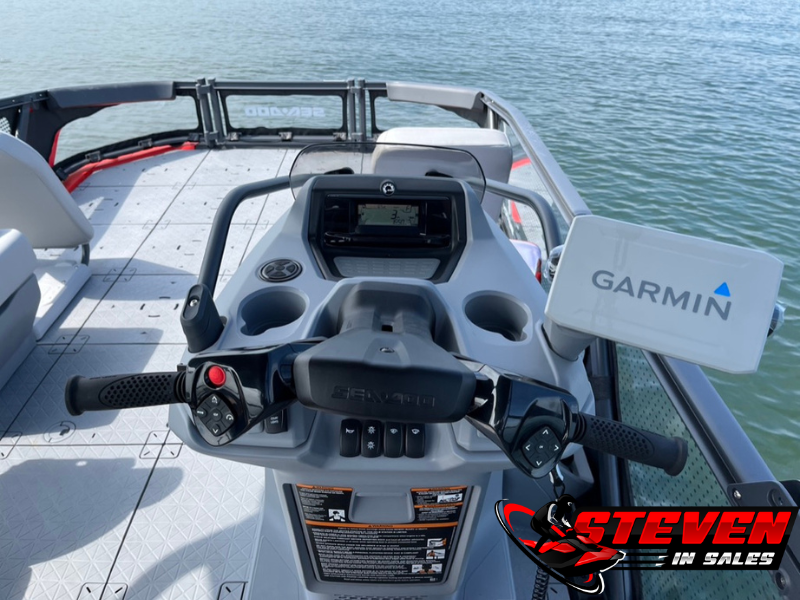
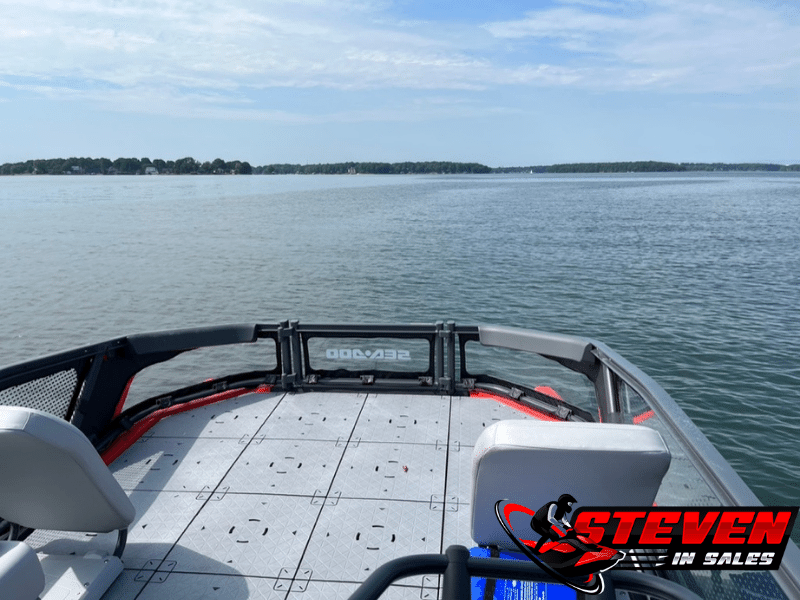

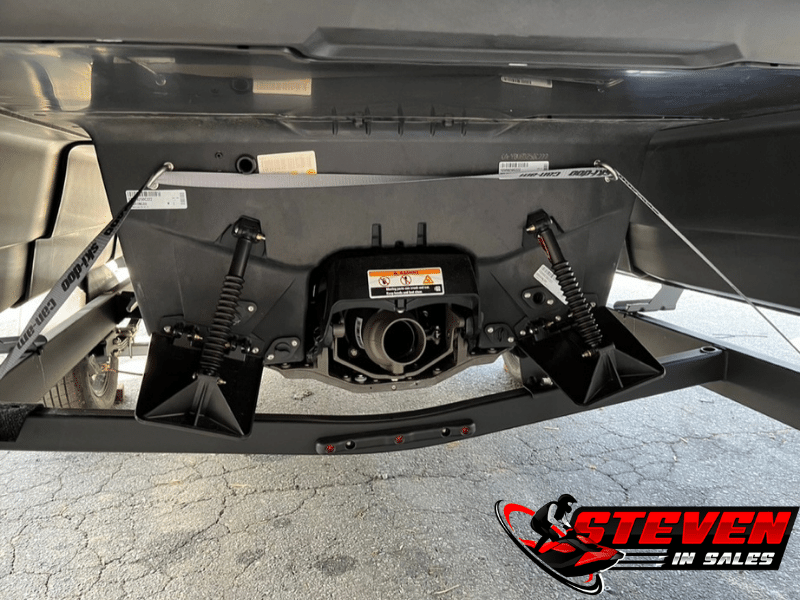


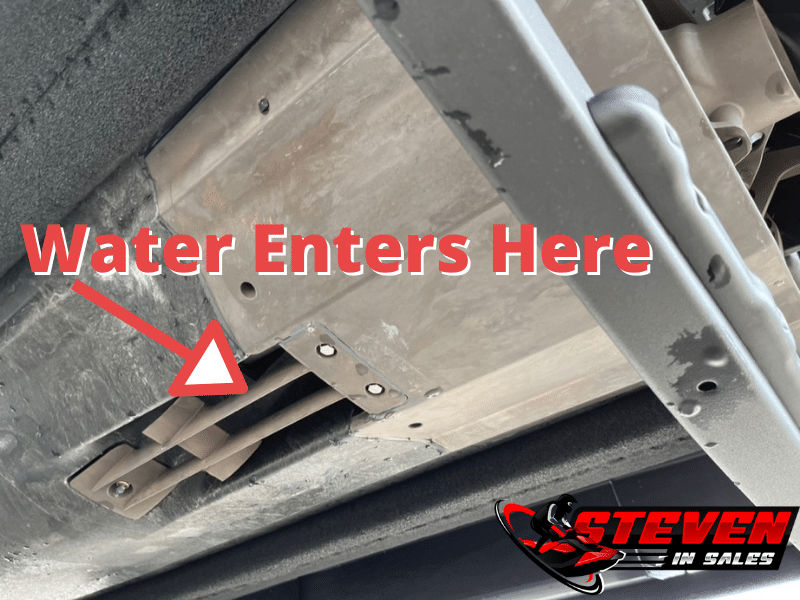
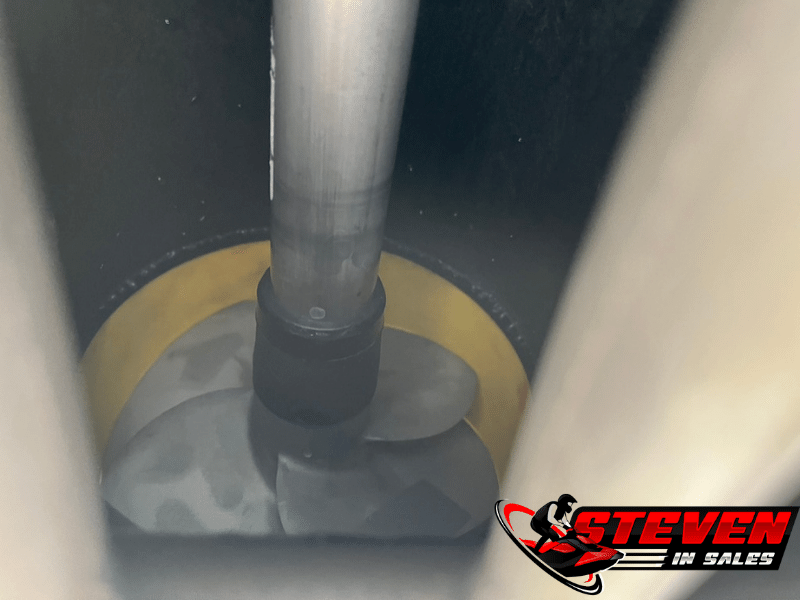
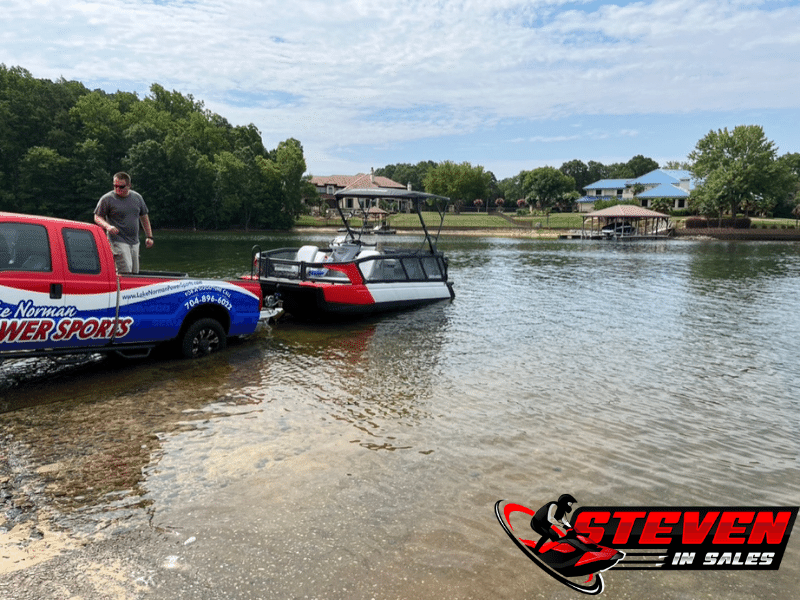

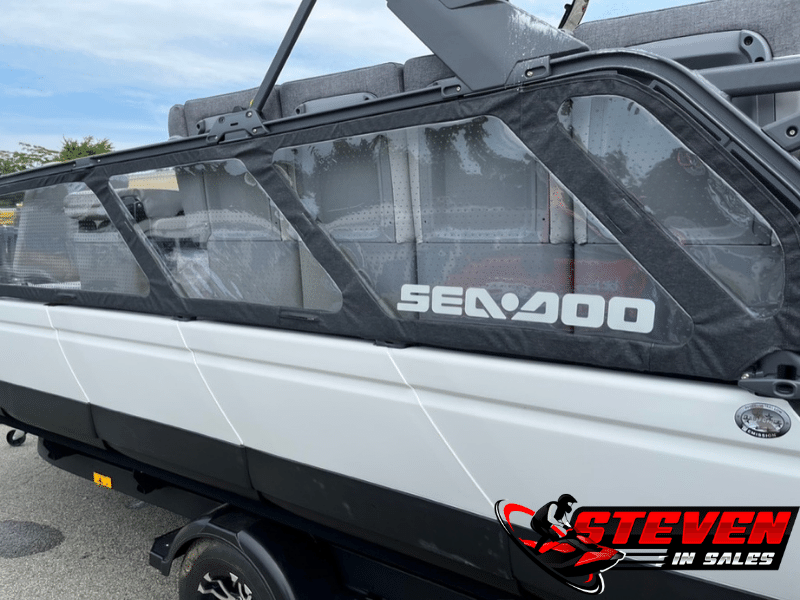
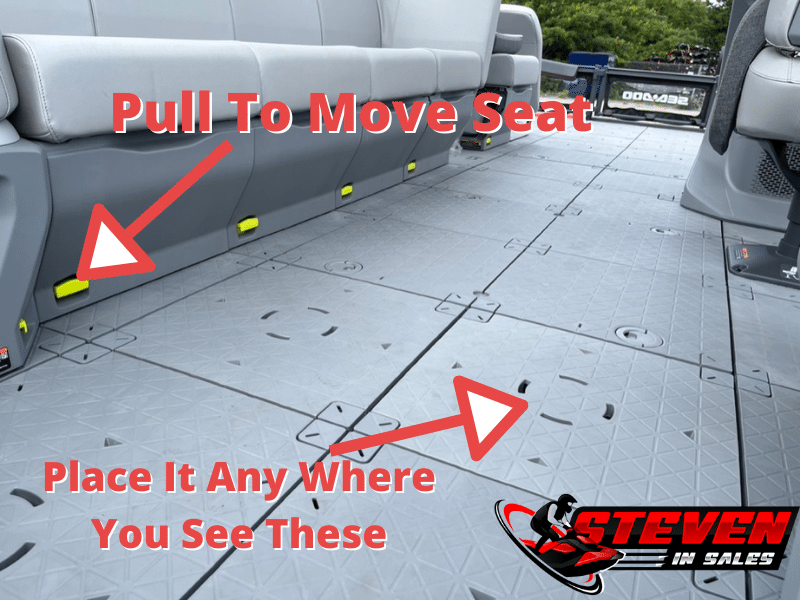
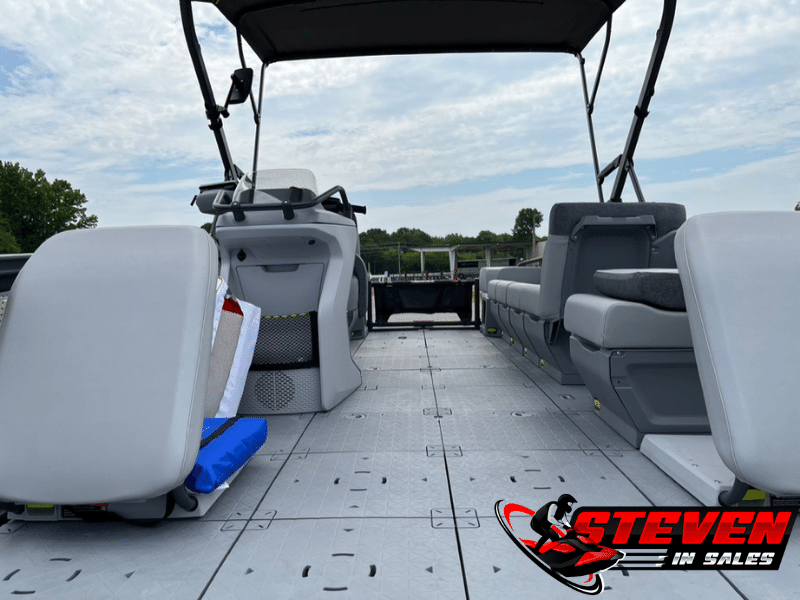
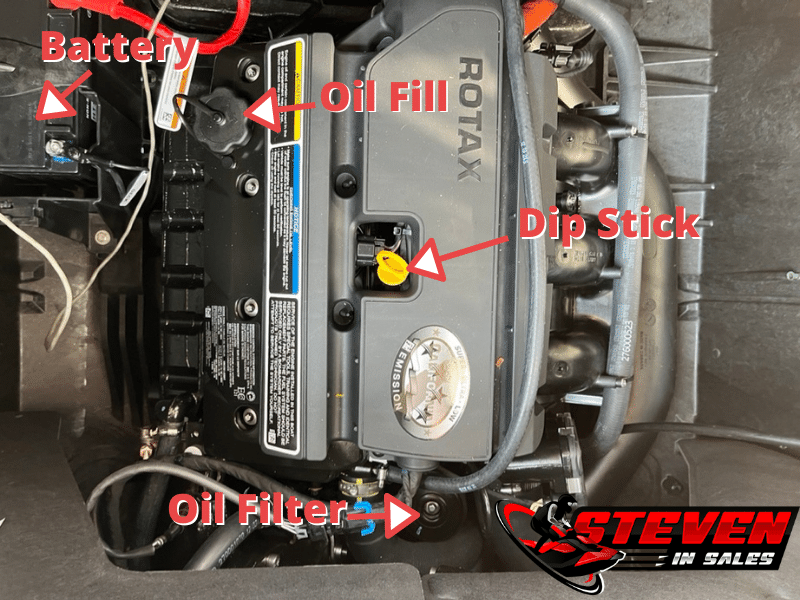
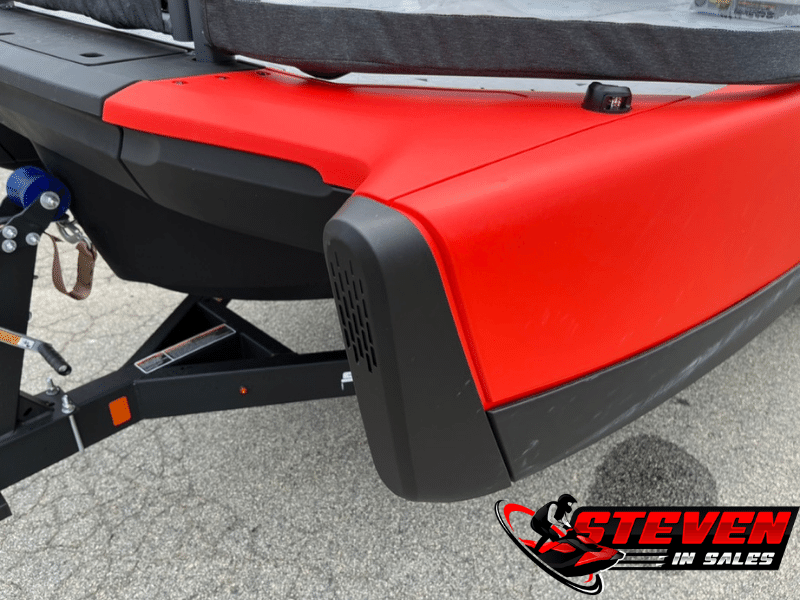

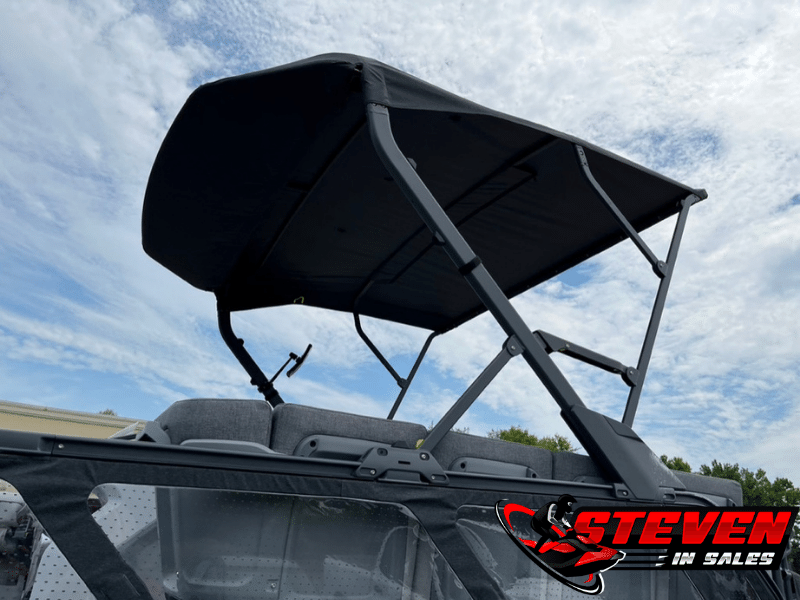
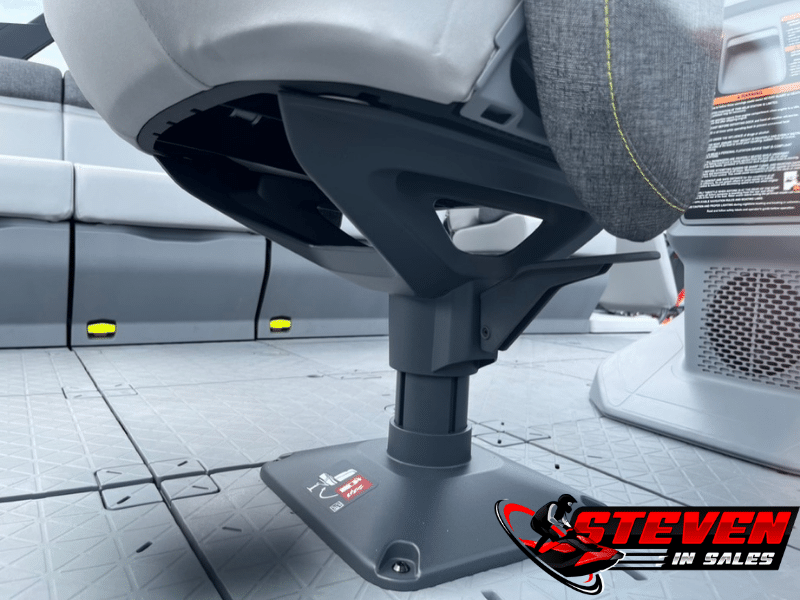
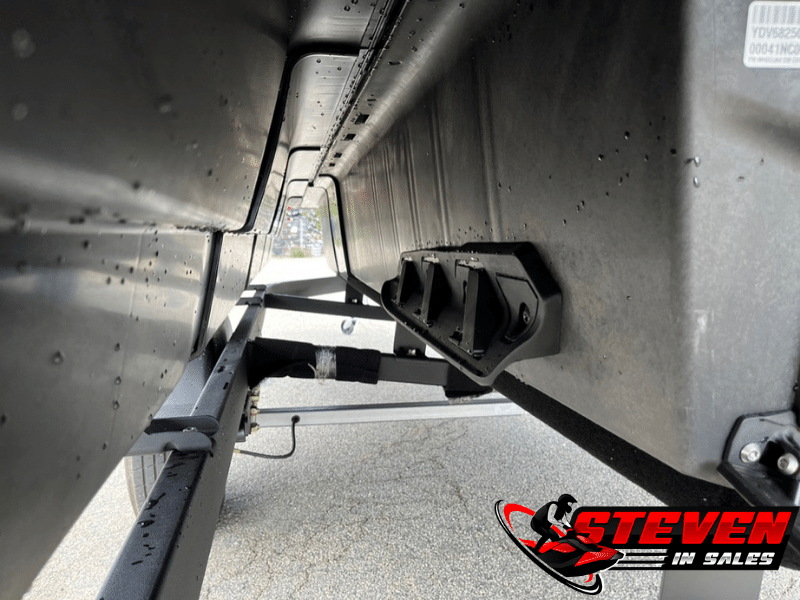
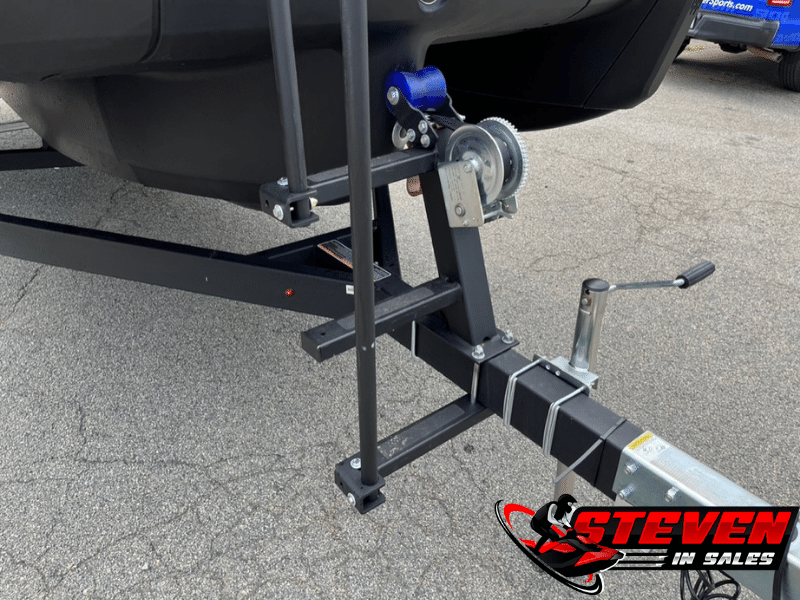

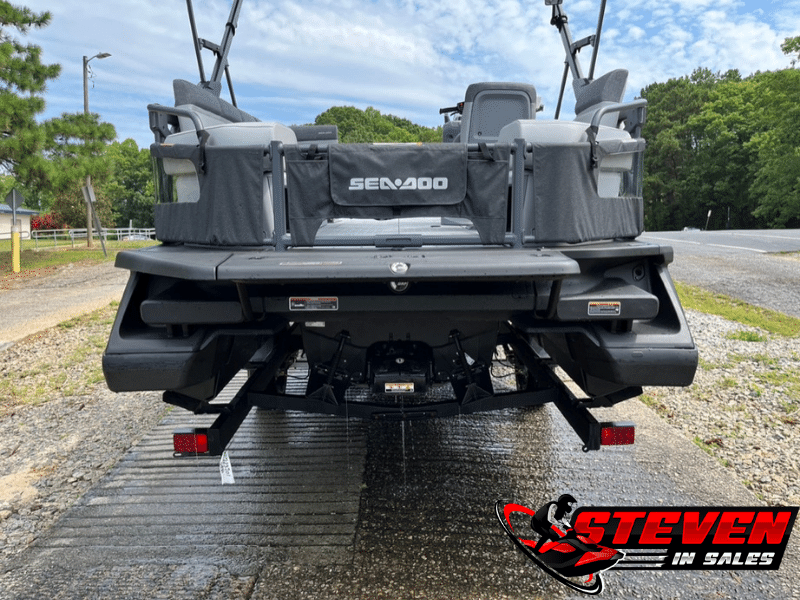


How is it for doing long slow cruises (say 5-7 mph)? Do you constantly have to adjust steering or will it track straight without much input? My center console requires a lot of input to stay straight at low speeds. If that is my primary use abd need low draft, would I be better off with a traditional pontoon? I already have a WaveRunner for high-speed fun.
And here is a strange question but it’s due to a long standing problem. I have access to a dock on a river heading that leads to the ICW. It can be VERY shallow during low tide – say 2′ for 200 yards out. This has caused me a lot of headache. The local boat ramp has horrendous current that makes docking a nightmare. Because I don’t like running jets shallow – could an electric trolling motor be mounted to the swim platform? I wont use for auto-tracking/fishing, just to get away from and return to the dock. I’ve seen mounts for the bow – but I need control at helm to dock.
Most boats need to be adjusted because you have the wind and water pushing you around. Since the Switch has such a tight steering, you don’t need to move it much, it’s about the same kind of tracking you would see from your Waverunner. Have you looked into remote controlled trolling motors? This way you can have it mounted in the bow and steer it from the helm. Here is a video of one on a pontoon: https://www.youtube.com/watch?v=FtnjK3545fE
Thanks for the response. I would only use a trolling motor for low-tide docking – so I’d want to be hands-on for response time.
Does the 170hp have a longer lifespan over the 230hp engine? What’s the approximate hour rebuild for both of those Rotax engines?
Both engines should last about the same, it’s just that the 230HP engine needs supercharger maintenance. Basically, inspect it every 200 hours and if it’s bad, you get a new supercharger. It’s not uncommon for these engines to last over 1,000 hours. The best testament for these engines come from jet ski rental companies who easily push the engines close to 1k hours.
Thank you! Is the supercharger pricey to replace?
If it fails, it could be a couple thousand. It depends on where you take it and whose selling it. Some guys will get it rebuilt instead, as it’s cheaper.
Thinking about buying a 21ft 2023. I’ve read up on just about everything on this boat but I haven’t seen anything for it if I on one side of the lake and it started getting dark on me, where’s the lighting for it ? So others can see me and so on…thank you
The Sea-Doo Switch has navigation lights so other boaters can see you at night. Here is a picture of the front, you can see the nav light: https://www.steveninsales.com/wp-content/uploads/2022/07/Sea-Doo-Switch-red-panel-front.png
You can add dock lights: https://www.youtube.com/watch?v=vD3w-0y6TtY
More info on the Sea-Doo Switch Navigation lights: https://www.sea-doo.com/us/en/owner-zone/getting-started/vehicle-information/sea-doo-switch-and-navigation-lights.html
Can the same switch run in fresh water as well as salt water? (Cleaning of course)
Yes, the Sea-Doo Switch can go in both fresh and salt water.
What is the engine life? I read that it’s a max 450 hours. How does that compare to regular engines?
That engine should get over 1,000 hours, if not 2,000. It all depends on how well you take care of it and do the proper maintenance. Other boat engines tend to last about 1,500 hours before a major overhaul. Jet boats tend to last longer than jet skis, even though they have the same engine, because they’re run at lower RPMs in comparison. It’s most often full throttle for a jet ski, but a boater will most often ride well below full throttle. 500 hours is a lot for a jet ski, but you double that for jet boats because they’re not ridden as hard.
We are looking to keep the switch at our dock, in the water. We will be on a fresh water lake in SC. Do we need to have a lift or can we take it out yearly and clean and flush it?
I highly suggest a lift for any boat, the build up on the bottom of the boat will slow it down quite a bit and the cost to clean it yearly will soon out weigh getting a lift soon enough.
Just bought a Switch up here in NY .. want to winterize it but I’ll be damned if I can find where I flush the motor. I’ve had Jet-Skis before and am familiar with it but unable to find it on this new vessel. Anyones comments would be very much appreciated. Thanks!
The flushing ports are at the rear near the iBR, usually one on each side depending on the model you have. Page 133: https://www.operatorsguides.brp.com/public/tmp/219002226-SMO22-EN-WEB.pdf
Do you need to protect the bottom if you keep it in the water for a period of time (barnacles)?
It’s best to get a lift if you can, or things will stick to the bottom of it.
Does the market have a lift that is configured for the Switch? Straps are not recommended
Sea-Doo says a lift made for tri-hull pontoons will work: https://www.sea-doo.com/us/en/owner-zone/getting-started/vehicle-information/what-type-of-boatlift-for-my-sea-doo-switch-pontoon.html
When I say lift, this is what I’m talking about: https://www.youtube.com/watch?v=8QKqB2OnmK0
There are some drive-up ones too:
1. https://gulfstreamdocks.com/sea-doo-switch-floating-dock/
2. https://www.jetdock.com/knowledge-center/seadoo-switch-pontoon-boat-dock.asp
Really good review – thanks for taking the time to write it and share all the photos!
Could you take this off shore fishing about 20 miles out? We do it on the fish pro sea doo.
This would be much better than a Fish Pro, just make sure you have the appropriate safety gear.
That looks really cool, do you know what the price range is?
The 2022 start at $17,999, but can get into the $40k range if you want a fully loaded one. The one in the review starts at $23,999.
That ain’t bad. A nice standard pontoon can get to $100k or more. I bet those sell like crazy